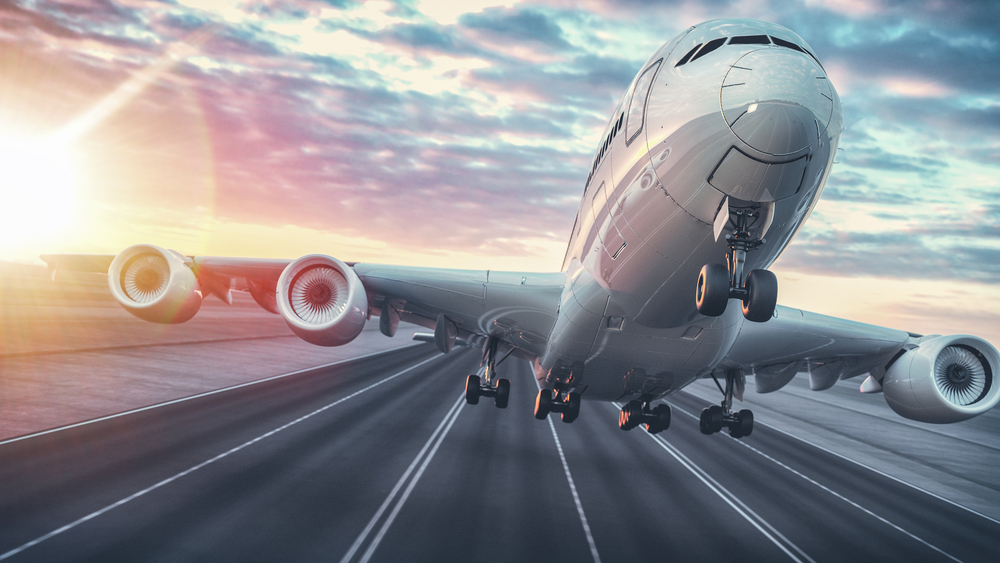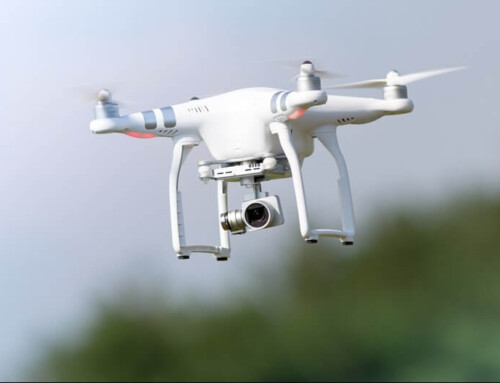Air travelers who are excited to travel after months of restrictions have encountered pilot shortages, inclement weather, and oversold or canceled flights resulting in travel disruptions. There have also been challenges at the ticket counters as agents try to keep up with accommodations for air travelers. Flight tracking company, FlightAware, reported that U.S. airlines have canceled nearly 3% of flights, and 20% have been delayed. (1)
Meeting planners have legitimate concerns about staffing shortages, the COVID omicron variant, and changes occurring in the travel industry. The airlines are consolidating the number of flights, scaling back on operations, and scrambling to train and hire new pilots. Flight consolidation may save money for the airlines on operating costs, but it creates chaos for airline travelers.
It isn’t all bad news, however.
The meetings, incentive travel, and events industry significantly impacted by the pandemic is quickly rebounding. In-person activities are in high demand and on the rise. In Q4 2021, a mere 17% of events were in-person. However, in Q2 2022, nearly 49% of events were face-to-face. (2) This means that meeting planners must keep up with the demands and fast-paced needs of air travel logistics.
What can meeting planners do to nimbly navigate the ever-changing dynamics of airline travel logistics? Here are ten tips:
- Get on the Right Flight
To lessen the odds of a flight delay or cancellation, consider factors such as:
-
- Book Air Travel ASAP
Nearly half of Americans plan to travel by plane. (3) The fall and winter holiday seasons are peak travel periods.
- Book Air Travel ASAP
-
- Consider the airport
Certain airports are more likely than others to have delays or cancellations. 20% of delayed or canceled flights occur at the world’s busiest airports. (4) On the other hand, major airports have their advantages too. Because of their size, major airports have numerous alternate options if your flight is canceled.
- Consider the airport
-
- Identify the best time and day to fly
Some destinations are always full flights, and many flights these days are fuller than in the past. However, there may be certain days of the week and times of day when flights are less full. Packed flights leave passengers with fewer options if a flight is delayed or canceled. When scheduling flights, look at booking earlier in the day. Avoid booking flights late in the evening, especially if it is the last flight of the day.
- Identify the best time and day to fly
-
- Pick an airline with multiple daily flights
Look for airline carriers that run multiple daily routes to your desired destination. It’s less likely that you’ll end up with travelers stuck at an airport if a flight is canceled because they can likely catch the next flight.
- Pick an airline with multiple daily flights
-
- Fly direct
The more segments on your journey, the greater the odds are that something can happen, such as a delay or cancellation. Nonstop flights, a flight with no layover or plane changes, are less likely to be canceled or delayed. From January through April 2022, nearly 80% of nonstop flights arrived on time, and only 4% were canceled. (5)
- Fly direct
- Review the 10-day forecast
While flight plans are often made many weeks in advance, it is essential to review news, weather, and other pertinent information that may impact a flight as the date approaches for travel. For example: Is there a major storm that’s headed in the flight path? Are there worker strikes? Are there any regulations or other governmental issues that might impact flight plans? Is there adequate transportation to the airport, or do adjustments need to be made to other parts of the itinerary? Are there limited planes, or are their mechanical issues creating plane shortages?
PRO TIP: Airlines will issue a travel waiver when inclement weather is highly probable. Travel waivers may allow travelers to receive a full refund on unused tickets and avoid additional fees if rerouting or rebooking. Passenger Name Record/Reservation (PNR) information is essential when re-accommodating group travelers. Be sure you have this information consolidated in a single report and accessible. This can significantly reduce airline call center interactions, condense needs to re-accommodate travelers more quickly, and reduce traveler anxiety.
- Plan for Contingencies
Part of great planning is taking as many of the “what if” scenarios off the table as possible. Consider optional planning using real-life scenarios for inspiration, such as:
-
- If all flights are canceled from the Orlando International airport to Chicago, what contingency planning can be made? Could plans be made for transportation to the Orlando Sanford Airport with a flight flying into Rockford, IL?
-
- Should trip insurance be part of planning which might be necessary, especially if travelers need to be quarantined in a Caribbean location due to a pre-flight, positive COVID test, and are unable to return home?
-
- Is a refundable ticket necessary for some or all travelers if there are essential itinerary changes?
- Is a refundable ticket necessary for some or all travelers if there are essential itinerary changes?
- There’s an App for That
Download the apps for everything: weather, airport, airline, transportation, car rentals, trains, etc. Being able to plan, such as knowing weather conditions and any issues with delays, whether it’s with flights or transportation or even hospitality, can help start planning early! And having everything at your fingertips makes it easier to locate the information you need when you need it.
PRO TIP: Get real-time flight delay and cancellation data from FlightAware.
- Use the ‘Track My Flight’ Feature
Early check-in doesn’t mean that flights won’t be delayed or canceled. However, they can help keep you updated about the status of flights with notifications. If flying with a major airline, look for a feature in the official app that tracks your flight, signs up, or enables notifications. This can help determine if your flight may be late and if you will miss a critical connection, and whether alternate plans need to be made immediately.
- Pack with Intent
No one wants luggage to go missing, take a separate journey far away from its owner, or worse yet, simply disappear. As a meeting planner, attendees and other travelers on your team need to know the benefits of carry-on baggage versus checking bags. Carry-on baggage is ideal for keeping at least a change of clothing, a day or two of medication, and necessities such as a toothbrush and deodorant. Carry-on luggage also significantly increases the odds of your bag arriving at its destination – at the same time as you and your travelers do! Planning for baggage can help navigate if a flight is delayed (and requires an overnight stay) or canceled and your flight needs to be rebooked or rerouted. But if carry-on luggage is limited, look for airlines that can track baggage with an attached microchip so that travelers know where the luggage is, even if it is misrouted.
PRO TIPS:
-
-
- Encourage travelers to use travel cubes. These keep luggage organized and will make it easier if TSA or customs needs to search luggage.
- Instruct travelers in your party to include their name, address, phone number, and alternate contact phone number (such as a work voicemail) where they can be reached. This sheet of paper should be added to the inside of all baggage so that it can be identified when opened and not just by an exterior tag.
- Take photos of the items included in the luggage and keep a list. If the baggage is lost or fails to make it to its destination on time, depending on the terms and conditions of the airlines and any travel insurance (if purchased), reimbursement for the items will be easier to obtain.
- Advise travelers that when traveling with a significant other, good friend, parent, sibling, etc., and checking two bags, pack each item of luggage with items necessary for both This way, should one item of baggage be delayed or lost in transport, both people will have some items needed in the luggage which arrived safely at the destination.
- Minimize TSA searches and delays. Magazines, books, or large document files often cause baggage searches. Be sure to remove them from carry-on or other baggage and place them in bins before they go through the scanners during security checkpoints.
-
- Arrive Early
Delays aren’t just with the airline carriers. They’re e-v-e-r-y-w-h-e-r-e. When airlines advise travelers to arrive two hours before the flight time, plan more than recommended. USA Today recently reported that the average time it takes travelers to get through a TSA line at a Maui airport is nearly 90 minutes. (6)
- Skip the wait
Advise travelers in advance to look at programs such as TSAPrecheck, Clear, and Global Entry. While it won’t eliminate waiting entirely, these paid programs can significantly reduce the time spent in long lines. Some credit card companies and frequent flyer programs offer discounts or will pay for membership upon request.
- Agile Plan Modification
How fast you act is critical when a flight is delayed – or canceled. It’s a make-it-or-break-it moment. If you’re lucky enough to have a vendor partner with a travel team that you can call or text, make that your first move as you walk briskly to the airline agent’s desk. Put that team to task and ask them if you need to take any course of action. Likely, they have it covered for you, and you can sigh in relief and sit back down. If, however, you’re in charge of all the details, be prepared to multitask. This is where you’ll need to call your airline carrier. While you’re on hold waiting to speak to an agent, use your app to look for alternate flights and be prepared to book them. It doesn’t matter whether it’s the agent at the desk, the agent on the phone, or through the app that can provide a solution, you need something to happen fast. Whatever and whoever can do it first is what matters.
PRO TIPS:
-
-
- If you’re in the United States and contact your air carrier through a toll-free or domestic number, try calling an international call center instead. Often there is a much shorter waiting period, and you’ll likely get faster responses and a solution!
- Consider another airline carrier. This is a little-known secret. Being willing to fly via an alternate airline could work to your advantage. If you attempt to book a last-minute flight with another airline on your own, this could translate to significant out-of-pocket costs. However, if you negotiate with the airline that has canceled your flight, they can book you and your travelers with an alternate air carrier, but they will do so at their own expense. This can save you money and still get you and your travelers to your destination!
-
- Review Your Air Travel Rights
If a flight has been significantly delayed or canceled, airlines may be required to reimburse travelers for the inconvenience. This may include financial compensation, paid hotel, transportation, dining or food vouchers, etc. You may have to ask for some of these; in other cases, they will simply be offered as required by law. In the United States, air travelers are protected by law through the U.S. Department of Transportation. Read more here.
Need some help planning your next destination activity for an incentive travel or corporate meeting? Contact Gavel International for more information.
______________________________________________
SOURCES:
-
- https://www.nytimes.com/2022/07/01/travel/summer-travel-flight-delays-cancellations.html
- https://www.bizzabo.com/blog/event-marketing-statistics/
- https://ir.tripadvisor.com/news-releases/news-release-details/long-haul-travel-surges-and-mexico-ranks-1-americans-fall-says
- https://www.cnbc.com/2022/07/01/airline-travel-of-july-weekend-puts-airlines-and-travelers-to-the-test-after-difficult-spring.html
- https://www.bts.gov/newsroom/april-2022-us-airline-traffic-data
- https://www.usatoday.com/story/travel/airline-news/2022/07/22/travel-tsa-lines-airport/10123548002/
- A Meeting Planner’s Guide to Using Drone Photography - April 15, 2024
- 11 Essential Items a Meeting Planner Must Have in an Event Kit - March 25, 2024
- Gavel International Joins in Global Meetings Industry Day 2024 (#GMID2024) Celebration - March 22, 2024







